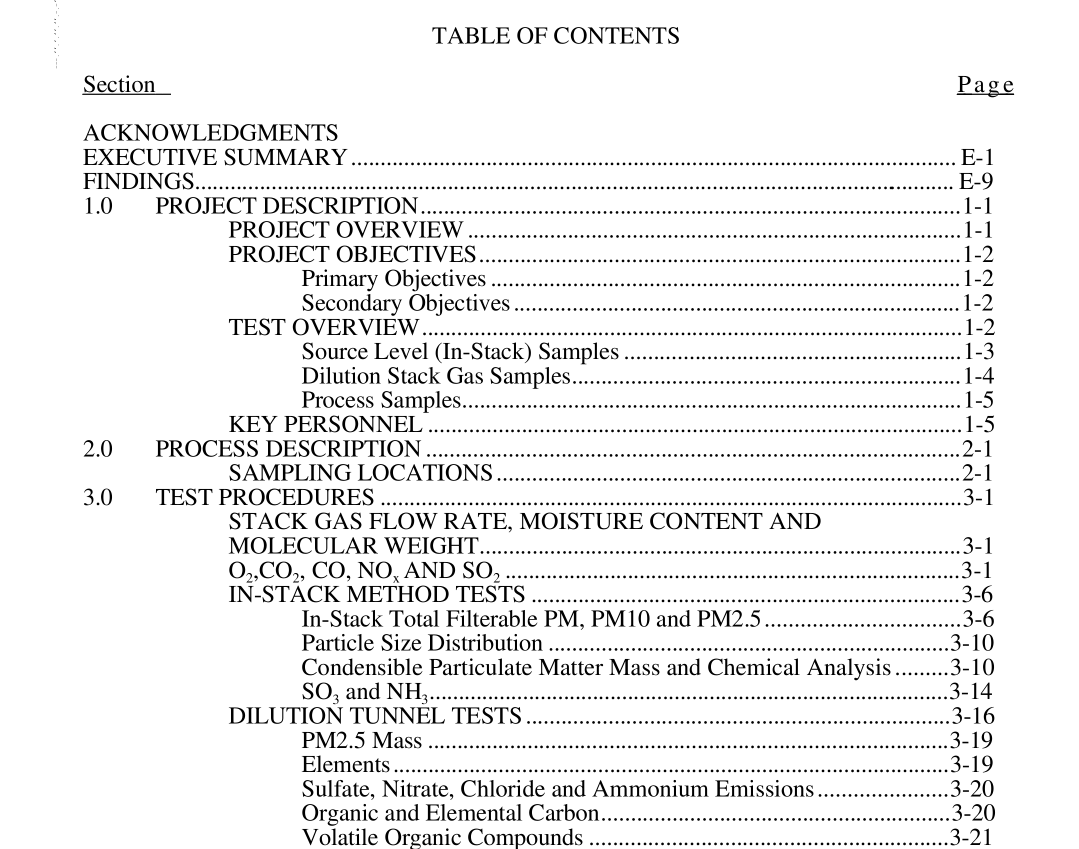API PUBL 4713 pdf download

API PUBL 4713 pdf download.Characterization of Fine Particulate Emission Factors and Speciation Profiles from Stationary Petroleum Industry Combustion Sources
This report presents results of a pilot project to evaluate the test protocol on a refinery fluid catalytic cracking unit (FCCU). The FCCU tested is a partial combustion unit with a process capacity of 47,000 barrels per day. The CO-rich offgas from the regenerator is combusted with refinery process gas in a process heater, which preheats the FCCU process feed. The process heater flue gases pass through an electrostatic precipitator to recover catalyst fines, which also reduces particulate emissions. The unit has no controls for NO x or SO 2 emissions. The FCCU was operating at approximately 94 percent of capacity and the flue gas temperature at the stack was approximately 579°F during the tests. The tests included comparison of a dilution tunnel research test method for sample collection and traditional methods used for regulatory enforcement of particulate regulations. The dilution tunnel method is attractive because the sample collection media and analysis methods are identical to those used for ambient air sampling. Thus the results are directly comparable with ambient air data. Also, the dilution tunnel method is believed to provide representative results for condensible aerosols. Regulatory methods are attractive because they are readily accepted by regulatory agencies and have been used extensively on a wide variety of source types;however, existing regulatory methods for condensible aerosols may have significant bias problems for some source types and analytical options are limited. In addition to a standard EPA particulate sampling train, hot and cold cascade impactors were used to measure particle size distribution. Ammonia (by EPA Method 206) and sulfur trioxide (by controlled condensation) emissions also were measured. The results of these tests demonstrated that the test protocol developed by API could be applied successfully to refinery sources. The results also were used to refine the test protocol leading to lower costs for future tests. Emission factors for primary particles including: total particulate mass, PM10 (mass of particles smaller than 10 micrometers), and PM2.5; elements; ionic species; sulfuric acid; and organic and elemental carbon are presented in Table E-1. Emission factors are expressed in pounds of pollutant per thousand pounds of coke burned in the regenerator. The tables include only those substances that were detected in at least one of the three test runs. The uncertainty and upper 95 percent confidence bound also are presented. Emission factors for semivolatile organic species that comprise organic carbon are presented in Table E-2. The sum of semivolatile organic species totals approximately three percent of the organic carbon. Emission factors for secondary particulate precursors (NO x , SO 2 , volatile organic species, and ammonia) are presented in Table E-3. Substances of interest that were not present above the minimum detection limit for these tests are listed in Table E-4.
In 1997, the United States Environmental Protection Agency (EPA) promulgated new ambient air standards for particulate matter, including, for the first time, particles with aerodynamic diameter smaller than 2.5 micrometers (µm), also referred to as PM2.5. There are few existing data regarding emissions and characteristics of fine aerosols from petroleum industry combustion sources, and such information that is available is fairly old. Traditional stationary source air emission sampling methods tend to underestimate or overestimate the contribution of some sources to ambient aerosols because they do not properly account for primary aerosol formation which occurs after the gases leave the stack. This issue was extensively reviewed by API in a recent report (England et al., 1997) which concluded that dilution sampling techniques are more appropriate for obtaining a representative sample from combustion systems. These techniques, which have been widely used in research studies (Hildemann et al., 1994; McDonald et al., 1998), use clean ambient air to dilute the stack gas sample and provide 80-90 seconds residence time for aerosol formation prior to sample collection for determination of mass and chemical speciation.









